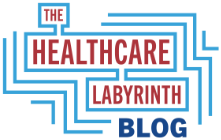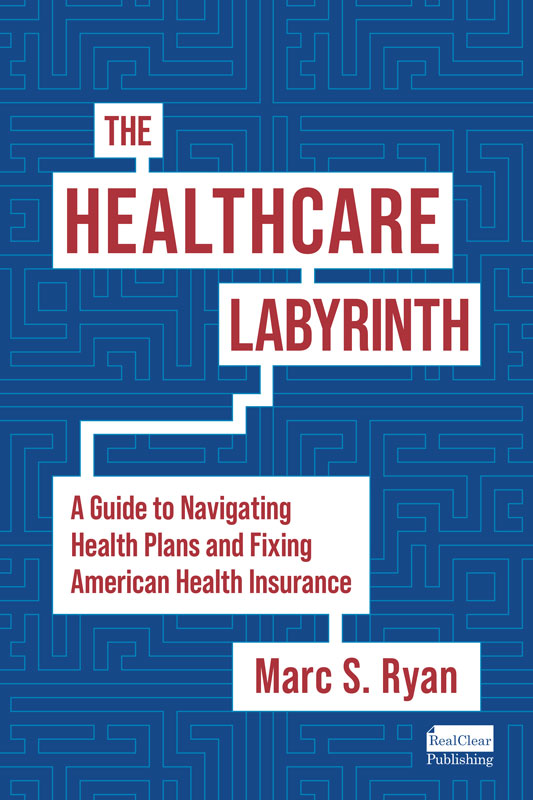This is one of a number of blogs that will appear on my daughter. I call her Kitty. She is a wonderfully talented, bright, and empathetic individual in her late ‘20s. She and I agreed I would write this series to impart how important health coverage is. Not only is her decision to have surgery courageous, but so is her decision to share her journey through me.
The principal reason to share the journey is because we both want to explain what many average Americans go through financially when they have major operations and do not have the best insurance or no insurance at all. My daughter is privileged to come from a well-off family and to have consistent and robust insurance. This will mean that she will pay a tiny amount for a surgery with a sticker price in the hundreds of thousands of dollars. But for uninsured and underinsured Americans, the costs of such a surgery could literally bankrupt them. In the alternative, they would forego important medications and the surgery altogether. My daughter has not had to do that, but millions of Americans do each year.
Throughout this series, we will give you updates on Kitty’s surgery and progress as well as share her health insurance journey, the bills she receives, the amount she pays, and calculate what someone who is uninsured and underinsured might pay. As well, since she has a connection to the United Kingdom, we will compare and contrast the U.K. and American healthcare systems.
For an overview of my daughter’s condition, go to Part 1: https://www.healthcarelabyrinth.com/part-1-my-courageous-daughter-is-having-brain-surgery/
For all the blogs on my daughter go here and search: https://www.healthcarelabyrinth.com/category/blog/ . There are now four parts.
Update on my daughter
My daughter is doing great just ten days after surgery. As much as we understand the marvels of modern medicine, we were surprised at how quickly she was in and out of the hospital. I thought my daughter might be have a five-day stay in the hospital because the health plan authorized up to that number of days. Going in we were told an average stay might be about three nights (going in Thursday and coming home some time Sunday). It turns out hospitals like to get younger folks out quite quickly. My daughter was out of the hospital and home within thirty hours of entering the hospital. Much of this was likely due to my daughter’s age (my almost 60-year-old body would not have reacted as well). But we, too, credit the technological advances and efforts to be as precise and the least invasive as possible during surgery. My daughter had so little pain that she managed symptoms post-operatively with simple acetaminophen.
Amazing technology
As I mentioned in an earlier blog, when my daughter was diagnosed with this brain malformation about a decade ago, the specialists were mixed on whether it should be removed. This time they were aligned in thinking it should be removed for a number of reasons: the symptoms both from the malformation and medications, the increasing risk to her of continuing events, and the relatively low risk of surgery today. It appears medical advancements the past decade lowered risk dramatically because much of the technology she had for surgery was not mentioned when she was first diagnosed. Leading up to the surgery, she had an MRI with global positioning (GPS). During surgery, she was in a similar “surgical GPS-aided MRI machine” that was helping guide the physician during surgery to ensure the least impact to brain tissue as possible. The MRI machine was verifying the position of the malformation and ensuring that all the impacted brain tissue was removed so that a follow-up surgery was not needed.
The impact of this technology was amazing. My daughter bounced back so quickly. Except for numbness in the right side of her mouth and on her right side (which likely was caused by the operation and should be temporary and go away over the next few weeks), she was up walking around the next day, reading a technical book on the economics of war and conflict (I am not sure I would be up for that without brain surgery!), and hankering to go home. The hospital was literally pushing her out the door so to speak, which we concurred with. They assessed early on that her age meant she could be out within a night or two and worked an aggressive checklist of “accomplishments” to be hit before discharge. There will be follow-ups and at least two more months before she can return to the U.K., but this could not have gone any better. Within a day at home, she was playing the piano and studying up on her Arabic and Persian. All her language skills and speaking are fully intact. My daughter says the most annoying thing about her recovery is my quizzing her each day on how she feels and if the numbness on her right side is receding.
World-class care
You often hear horror stories about people languishing in hospital beds for days and a lack of attention to follow-up care. Some argue (including sometimes me) that this is both a function of hospital disorganization and a deliberate scheme to drive revenue. In this case, nothing could be farther from the truth. Admittedly, we were in a world-class, teaching hospital (one of the top nationwide big city neurosurgery programs) with superb physicians (in surgery and post-operatively). My daughter was moved from surgery to an intensive care unit (ICU) specializing in brain surgery. The physicians (both surgeons and ICU) were associated with one of the best research medical schools in the country. The physician practice is multi-specialty and associated with both the hospital and medical school.
At the ICU, we had constant attention from ICU nurses and other medical professionals. In the thirty hours, we saw the following:
- The neurosurgeon post procedure – actually so quickly that my wife and I had our hearts drop when we saw him walk into the waiting room. We were told to expect about a five-hour surgery and recovery time. That was about right.
- Specialized recovery nurses
- Three experienced and compassionate ICU nurses who seamlessly handed off care between shifts. Showing how modern medicine is bucking conventional stereotypes, two of the three nurses were male.
- A nurse practitioner specializing in neurology
- An attending internal medicine/hospitalist overseeing overall recovery and holistic care.
- An attending neurologist overseeing recovery related to the operation
- Physical therapy
- Occupational therapy
While teaching hospitals tend to have long length of stays due to the presence of medical students, residents etc. being trained, this was not the case. These individuals were incorporated into the process expertly and efficiently. We were happy to be part of training the next generation of neurologists and neurosurgeons.
Transformation at hospitals occurring through value-based care
I think a good deal of the great and efficient service we received was due to the facility we were in. But I think a good portion is because of the major changes going on in hospitals themselves. With the advent of value-based care payments in various areas of Medicare and commercial coverage (e.g., readmission penalties, payment bundling, quality bonuses and penalties, and accountable care organizations), hospitals are rethinking how they deliver care. The emphasis is no longer just on bed days, but the quality of the care and experience as well as care transitions. With the migration from per diem reimbursement to various global payments, time in the hospital is not the most important thing. Hospitals around the nation (like ours) are working on initiatives such as hospital-at-home and other ways they can support ambulatory or at-home care. Yes, the hospital lobbies will always be fixated on protecting traditional reimbursement and policies, but real change seems to be occurring.
Remember those without the means to obtain great care
In the end, my daughter and I reflect on how lucky we were and are. Many Americans could not possibly have this experience. They may be uninsured or underinsured and forego the operation altogether. Their quality of life would not be what my daughter’s is or will be. Without strong insurance and knowledge of the system, they may not have had the privilege of this hospital experience even if they did have the operation. Their out-of-pocket costs might have been demonstrably greater or entirely unmanageable than what we will ultimately pay out.
One purpose of this series was to shine a light on how good Americans can have it – if they have good insurance and can afford it. We have the means and bought the best care – through high insurance premiums, second opinions from the very best in the nation, and selecting one of best hospitals and surgeons possible. But we also believe that everyone deserves the chance at good health, regardless of economic station. In this series we have shown how a private model of healthcare has its benefits. My daughter likely could not have received this operation in the U.K., at least not any time soon. At the same time, so many in America are frozen out of both primary care and this type of specialty care.
A better way through reform
There is a better way. Based on what other developed countries spend on healthcare as a percentage of gross domestic product (GDP), America could free up a piece of between $1.3 to $2 trillion annually in added costs to fashion an alternative that covers every American and gives them access to the best, on-demand, and most technologically driven healthcare possible. We would be the envy of the world and still save money. It is all about parties coming together to fashion the system.
Future blog
We have told you what the hospital and surgeon told us about billed charges and some allowed payments from my daughter’s insurer. No word yet on final claims, but we know that there will be additional bills coming in from the other players. We hope to sum up the gargantuan billed charges, the still-very-high allowed amounts, and final out-of-pocket costs across various patient use cases (based on insurance status) soon.
Thank you!
Thanks for all the prayers and thoughts during this time. It means a lot. And they obviously helped. Keep those thoughts and prayers coming for all those who are not as fortunate. They are the ones who really need the prayers and help the most.
#healthcare #healthcarereform #coverage #aca #exchanges #medicaid #obamacare
— Marc S. Ryan





